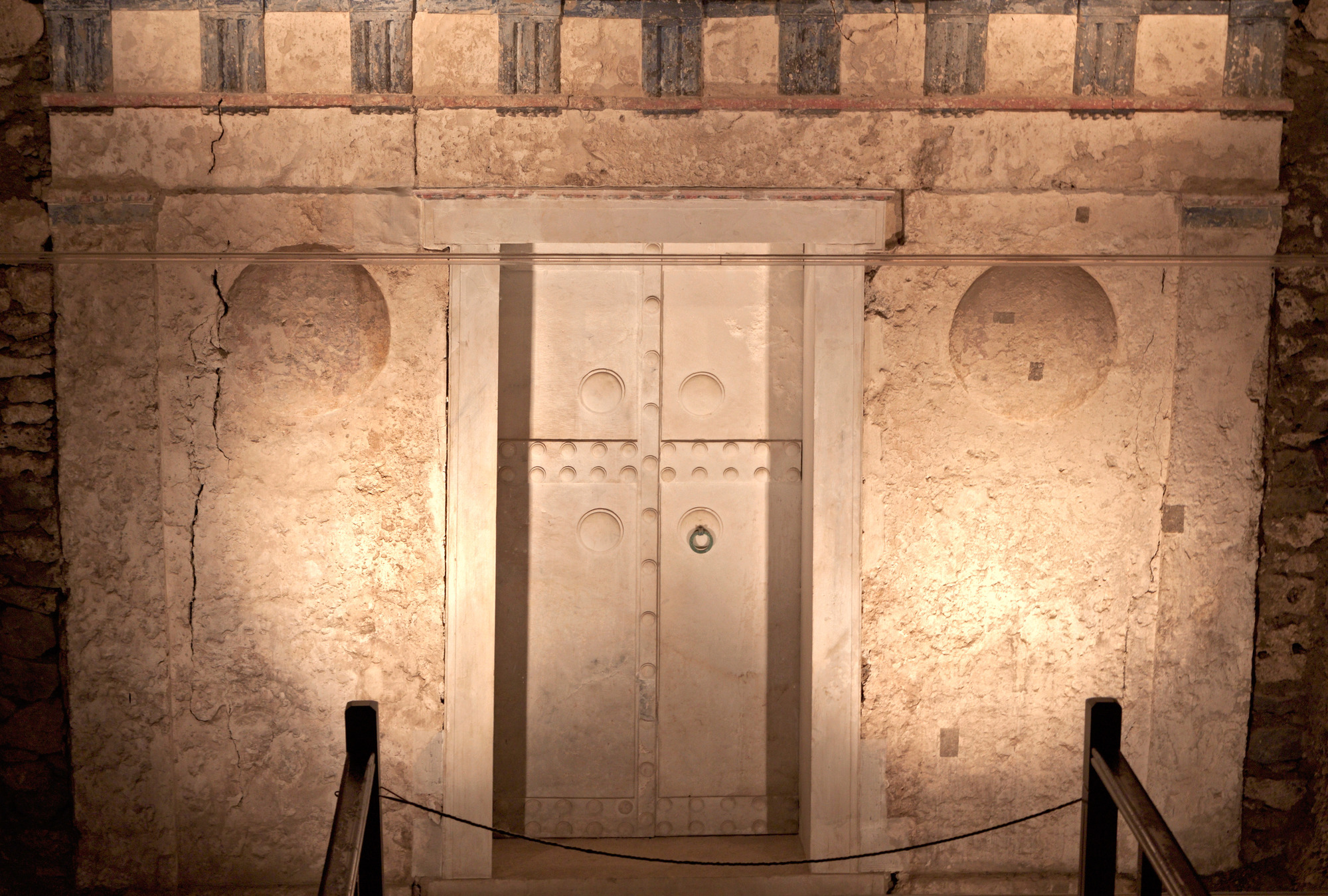
Tomb of Philip II at Aigai
Tomb of Philip II at Aigai
One of the most significant discoveries in the history of archaeology
On November 8, 1977, archaeologist Manolis Andronikos and his team came across one of the most important finds in the history of archaeology: the untouched tomb of Philip II, the king of Macedon and father of Alexander the Great, which had remained sealed for 23 centuries since his burial in 336 BCE at ancient Aigai. The persistence of the renowned archaeologist in excavating the area around Vergina for decades had brought to light an unparalleled treasure that had astonished the global scientific community. This treasure is now visitable at the Archaeological Museum of Aigai, in the tomb of Philip II.
Within the golden larnax adorned with the sixteen-pointed star symbol of the ancient Macedonians, where the remains of Philip II were placed, the most famous artifact of the excavation was found—the heaviest and most impressive gold wreath preserved from antiquity, weighing 714 grams, consisting of 313 oak leaves and 68 acorns. Inside the enormous tomb, measuring 5.30 meters in height, were the king's weapons, an iron breastplate with gold decoration, another gold quiver, and his shield made of gold and ivory.
Today, visitors can enter the tomb and experience a unique journey, marveling at all the artifacts from the long excavation that are preserved in the adjacent museum.


